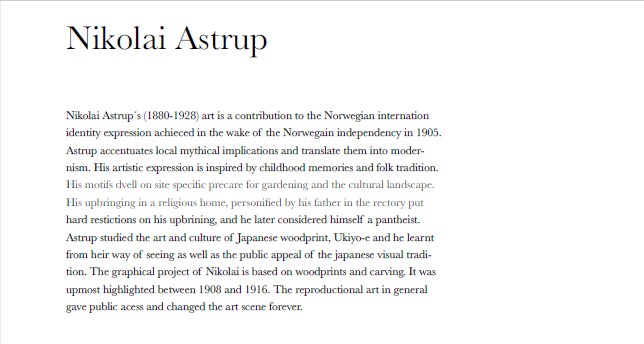
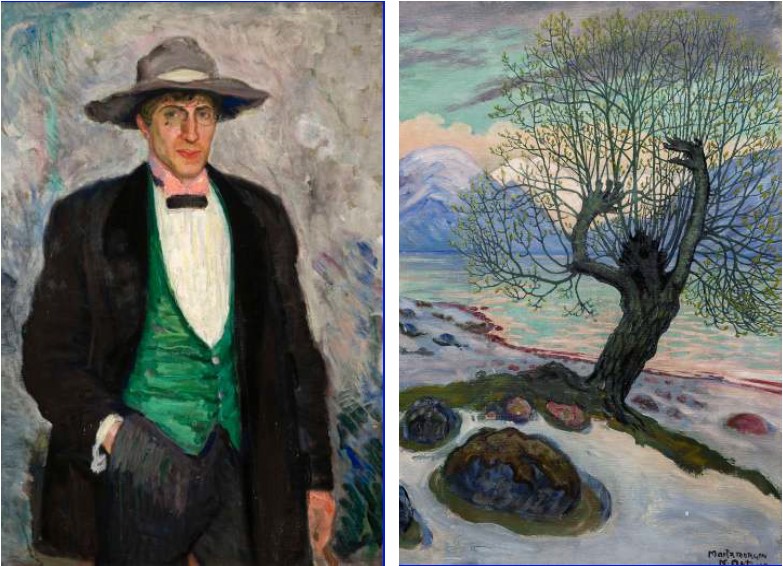
Nikolai Astrup´s (1880-1928) art is a contribution to the Norwegian internation
identity expression achieced in the wake of the Norwegain independency in 1905.
Astrup accentuates local mythical implications and translate them into modernism.
His artistic expression is inspired by childhood memories and folk tradition.
His motifs dvell on site specific precare for gardening and the cultural landscape.
His upbringing in a religious home, personified by his father in the rectory put
hard restictions on his upbrining, and he later considered himself a pantheist.
Astrup studied the art and culture of Japanese woodprint, Ukiyo-e and he learnt
from heir way of seeing as well as the public appeal of the japanese visual tradition.
The graphical project of Nikolai is based on woodprints and carving. It was
upmost highlighted between 1908 and 1916. The reproductional art in general
gave public acess and changed the art scene forever

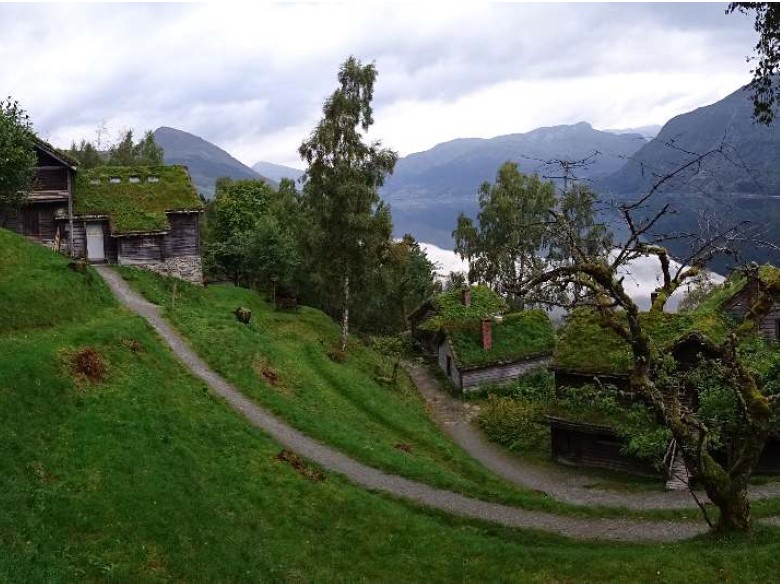
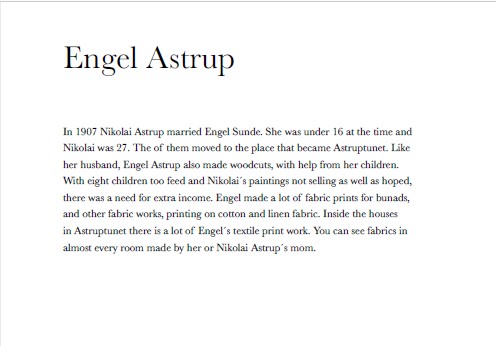
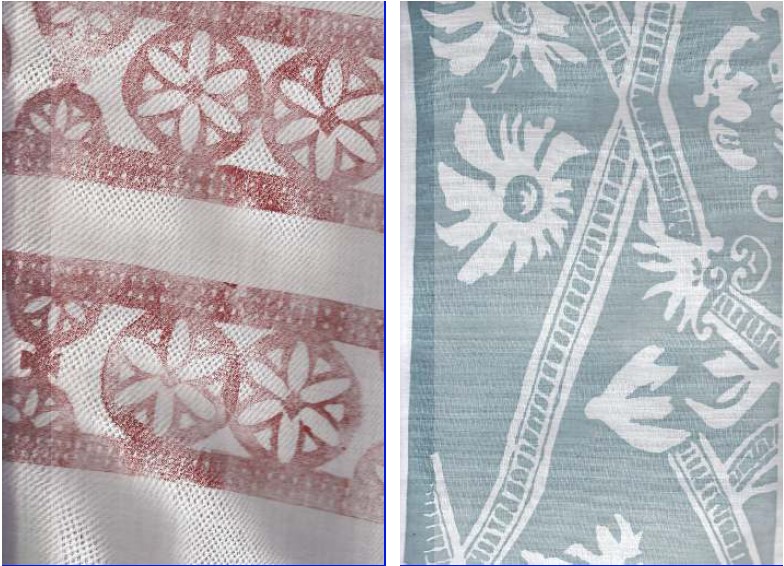
Fieldtrip to Jølster
The class spend seven days in Jølster, exploring the hometown of Nikolai Astrup. At
Jølster the students worked directly with Astrups landscape and home. Astrup’s art is
based on the landscape of Jølster. By interpreting this landscape, he understands the
world.